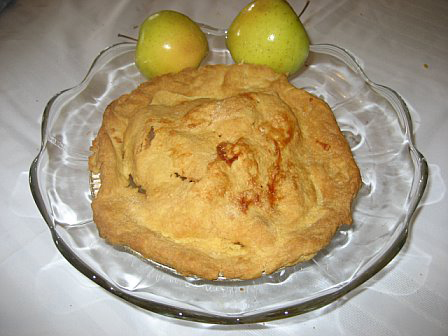State legislators and their staff have been busy whipping up homemade goods for the annual Hawaii Food Bank fundraiser. The effort to raise cash lasts from January to early May and features a variety of fares, from Filipino food to brownies ala mode.
“Any legislator good with fundraisers often has baked goods from their constituents, so that’s what we find here,” said Rep. Tom Brower.
 However, unbeknownst to many of the men and women who craft Hawaii’s laws, almost any food sold outside a restaurant or certified kitchen requires a permit.
However, unbeknownst to many of the men and women who craft Hawaii’s laws, almost any food sold outside a restaurant or certified kitchen requires a permit.
“These are short-term events or sales that are going to distribute food to the general public,” explains State Environmental Health Program Manager Peter Oshiro. “Anybody that has or wants to do those types of sales is required to get a temporary food establishment permit from the Health Department.”
Lawmakers organizing the annual drive for the food bank were caught off guard when approached by KITV4 about the need for a Department of Health permit.
“We make the laws here and it wouldn’t be prudent if we didn’t follow the laws that we make, and so it’s all about compliance,” said Vice-Speaker John Mizuno. “I’ll make sure that whenever we send memos at the kickoff of the Hawaii Food Bank fundraising effort, that we attach forms so that offices will know how to be in compliance.”
About 500 temporary food establishment permits are issued by the Health Department every month. Oshiro says the department just wants to make sure that all food is safe.

.jpg) tortillas, high-sugar pies and pastries, high-sugar jam and jellies, dry mixes (made from commercial ingredients), candy and fudge. Those foods do not support the rapid and progressive growth of infectious and toxicogenic microorganisms, including Clostridium botulinium, responsible for foodborne disease.
tortillas, high-sugar pies and pastries, high-sugar jam and jellies, dry mixes (made from commercial ingredients), candy and fudge. Those foods do not support the rapid and progressive growth of infectious and toxicogenic microorganisms, including Clostridium botulinium, responsible for foodborne disease. So here’s the abstract as a teaser.
So here’s the abstract as a teaser.
 "I will not stay silent. Most people who go to the farmers’ market know it’s not made in a commercial-grade kitchen."
"I will not stay silent. Most people who go to the farmers’ market know it’s not made in a commercial-grade kitchen.".jpg) “The kitchen has the potential to be most dangerous room in the house. Making it safe is easy. When handling raw meat mutter the mantra ‘turd to tongue’ or – if you have squeamish tendencies – ‘manure to mouth.’”
“The kitchen has the potential to be most dangerous room in the house. Making it safe is easy. When handling raw meat mutter the mantra ‘turd to tongue’ or – if you have squeamish tendencies – ‘manure to mouth.’” But for 10 years, various groups had made claims that
But for 10 years, various groups had made claims that  First, was a table representing known foodborne illnesses in Canada from 1990 to 1993. In March 1999, the U.S. Centres for Disease Control published active foodborne surveillance data from the end of 1998. Weekly updates are on their web site. The best we can do in Canada is 1993, and I have to buy the publication. Health Canada says they have plans to publish their data on the web … soon.
First, was a table representing known foodborne illnesses in Canada from 1990 to 1993. In March 1999, the U.S. Centres for Disease Control published active foodborne surveillance data from the end of 1998. Weekly updates are on their web site. The best we can do in Canada is 1993, and I have to buy the publication. Health Canada says they have plans to publish their data on the web … soon. We thought we might try Acapulco Restaurant, a Mexican franchise in town. That is, until I read on FSnet that the restaurant had just been named as the source of a
We thought we might try Acapulco Restaurant, a Mexican franchise in town. That is, until I read on FSnet that the restaurant had just been named as the source of a  The Welsh Assembly Government issued a ban on the sale of home-made products in schools in areas affected during the E. coli outbreak, but this guideline was withdrawn when the outbreak was over.
The Welsh Assembly Government issued a ban on the sale of home-made products in schools in areas affected during the E. coli outbreak, but this guideline was withdrawn when the outbreak was over.